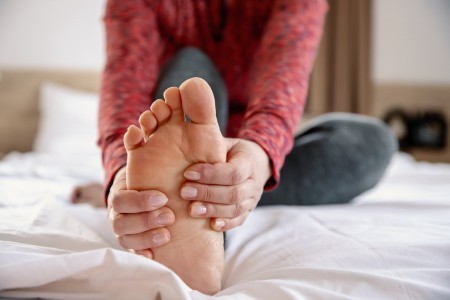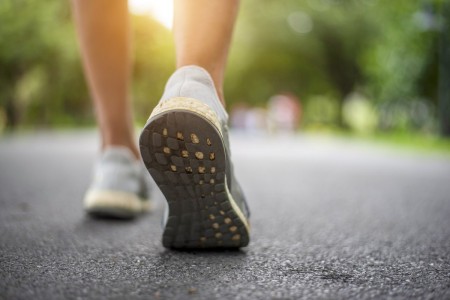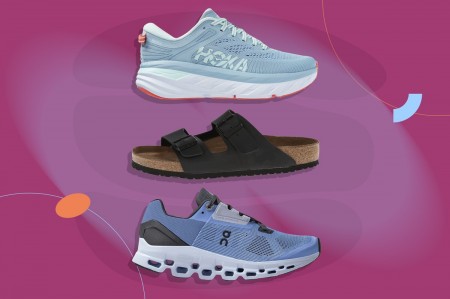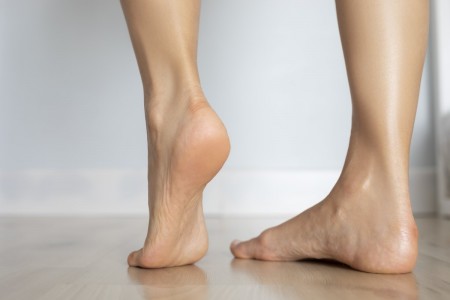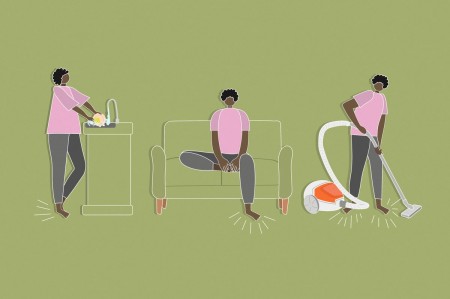
Advertisements
Anyone who has ever dealt with plantar fasciitis knows how uncomfortable and disruptive it can be — and how good it feels when you finally find relief. When it comes to the latter, a good pair of shoes can make all the difference.
Video of the Day
Plantar fasciitis occurs when the tissue across the sole of your foot (from your heel bone up to your toes) becomes inflamed, which then causes pain in your heel and arch, Jeffrey Cohen, DPM, chief of podiatry at Englewood Health, tells LIVESTRONG.com. He adds that you can relieve the pain of plantar fasciitis by taking anti-inflammatory medication like ibuprofen, regularly stretching the soles and arches of your feet and wearing high-quality, comfortable shoes.
Here, according to market research and podiatry industry standards, we've found the best options for shoes that won't aggravate your plantar fasciitis. Read on to find the right pair for your needs.
1. Best Overall: HOKA Bondi 7
Visit Page https://go.skimresources.com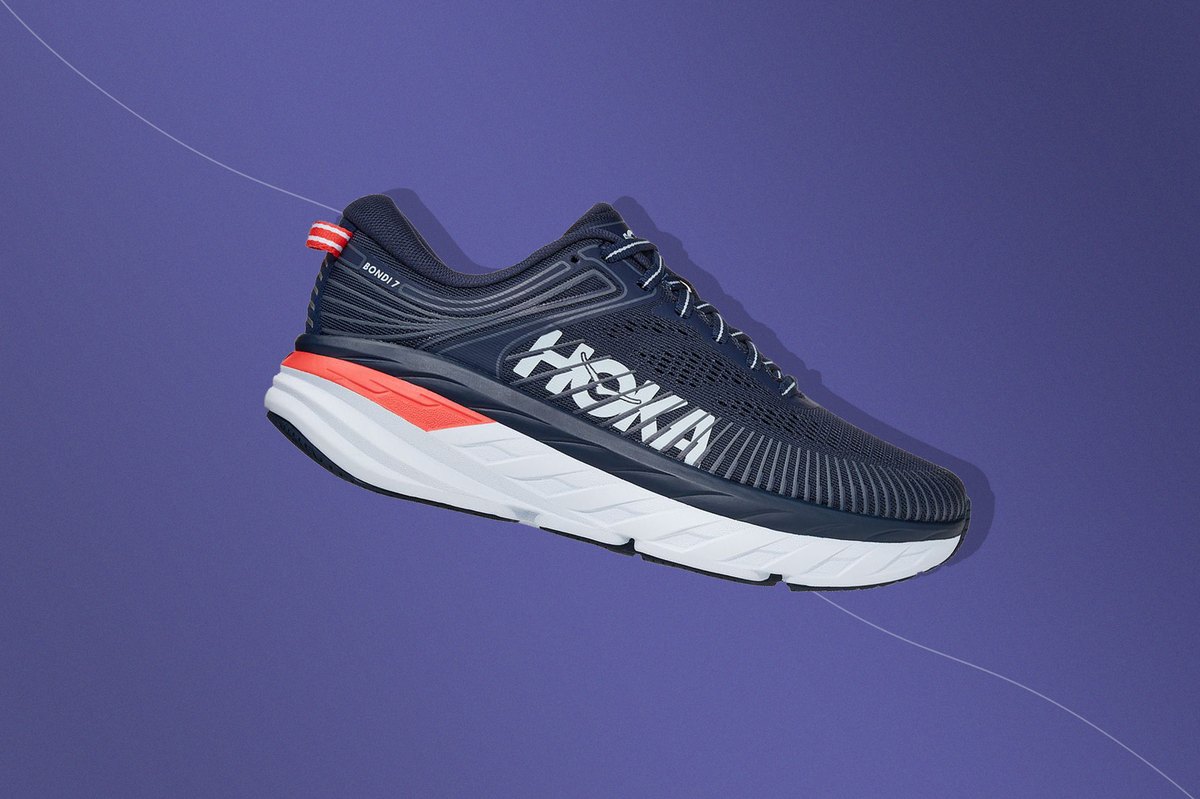
From its durable, thick sole to its memory foam collar, the HOKA Bondi 7 sneaker puts comfort first — the brand even touts it as its most cushioned running shoe.
In addition to its across-the-board cushioning, this sneaker provides structure and support where your foot needs it most: throughout the middle of your foot and around your ankle and achilles tendon.
The Bondi 7 is available in regular (D) and wide (EE) fits. Plus, it comes with the American Podiatric Medical Association (APMA)'s seal of acceptance, meaning it's been verified to help support your feet's overall health.
Buy it: Hoka.com (men’s sizes 7-16); Hoka.com (women’s sizes 5-12); Price: $160
2. Best on a Budget: Reebok Walk Ultra 7 DMX MAX
Visit Page https://go.skimresources.com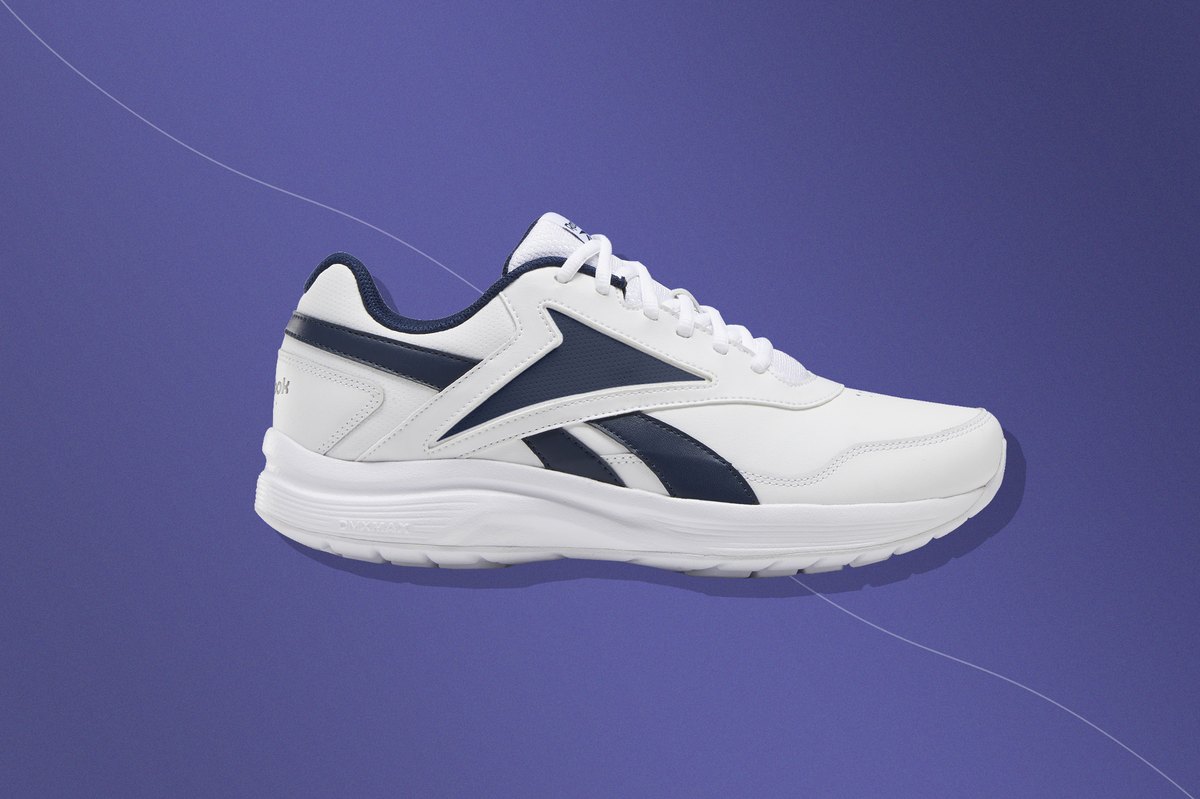
The Reebok Walk Ultra 7 DMX MAX similarly prioritizes comfort at a more affordable price point. Its sturdy — yet lightweight — construction encourages airflow within the shoe and it was designed with those who walk or spend all day on their feet in mind. Those with plantar fasciitis will particularly appreciate the way this sneaker's foam reduces pressure points around the heel and ball of the foot.
Another way to find affordable sneakers is to browse models from previous years and seasons, Dr. Cohen says. These will likely be sold at a discount compared to the latest, trendiest options.
Buy it: Walmart.com (men’s sizes 8-15); Walmart.com (women’s sizes 5-10); Price: $35
3. Best for Walking: Brooks Adrenaline GTS 21
Visit Page https://go.skimresources.com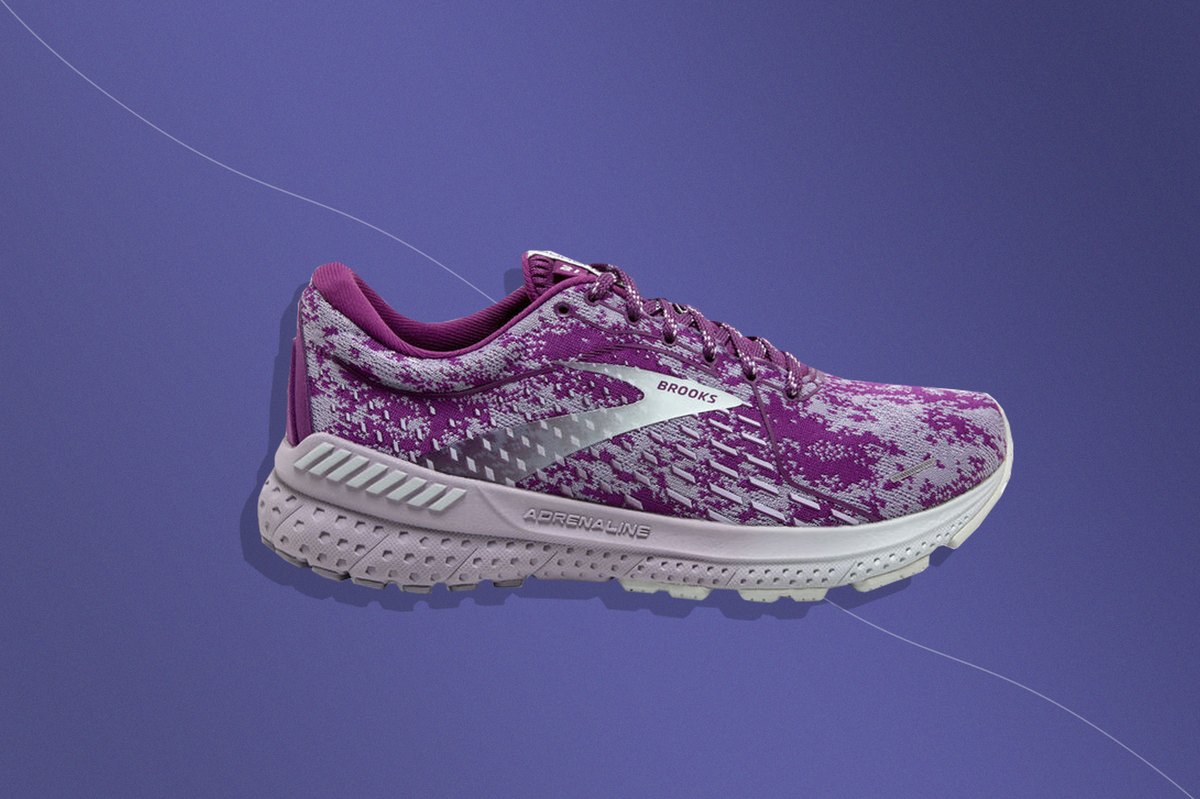
Brooks often gets high marks for its running shoes, but that doesn't mean you should overlook its walking shoe selection.
The Adrenaline GTS 21, in particular, is extremely well-suited to plantar fasciitis sufferers, thanks to its highly cushioned heel and midsole. Beyond that, its GuideRails and mesh support systems provide the level of structure needed for longer wear.
Buy it: BrooksRunning.com (men’s sizes 7-15); BrooksRunning.com (women’s sizes 5-13); Price: $130
4. Best for Running: Asics GEL Kayano 21
Visit Page https://go.skimresources.com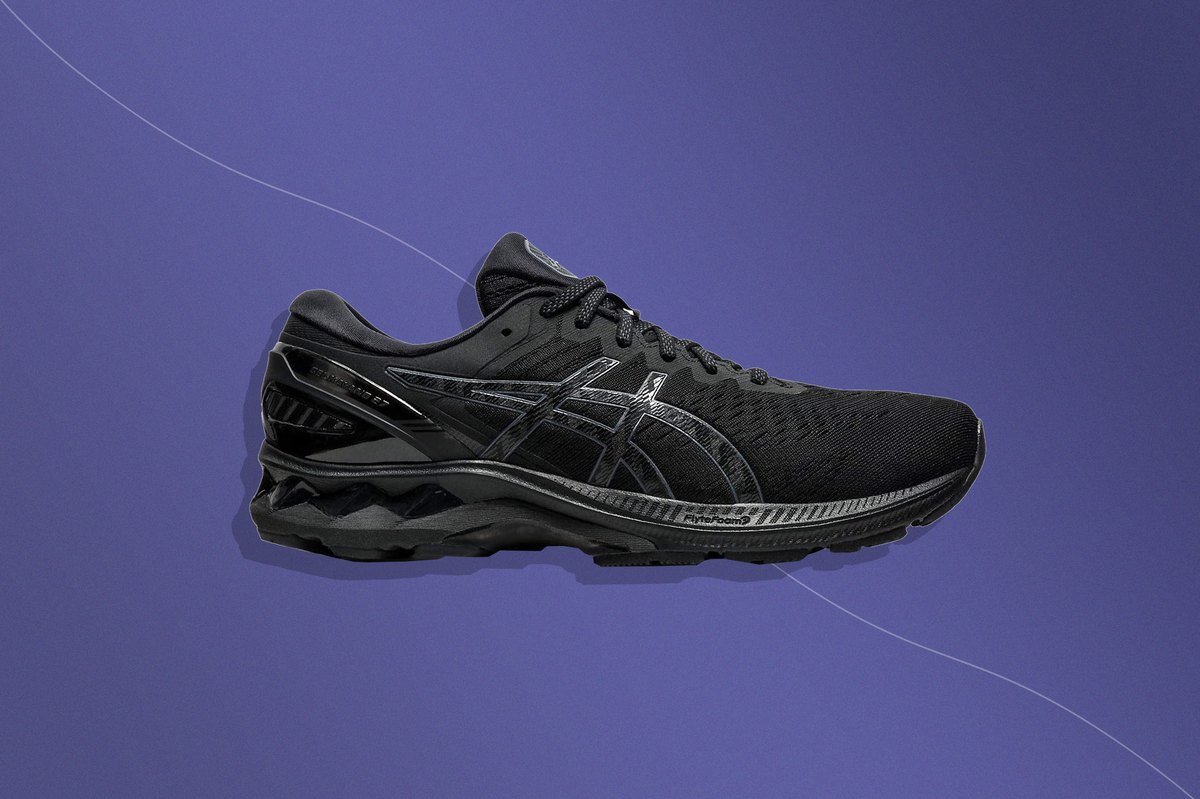
Runners with plantar fasciitis should make sure their sneaker of choice is designed to absorb shock and resist compression.
The GEL Kayano 21 from Asics does both, softening the impact of landing while encouraging a smooth, bouncy push-off. It also stabilizes the midsole and arch to prevent feet from rolling inward. This balance of structure and comfort are key to reducing the unpleasant symptoms of plantar fasciitis.
Check out LIVESTRONG.com's running shoe guide for more shopping ideas.
Buy it: Zappos.com (men’s sizes 7-15); Zappos.com (women’s sizes 5-13); Price: $160
5. Best for Hiking: Salomon X Ultra 3 Mid GTX Hiking Boots
Visit Page https://www.amazon.com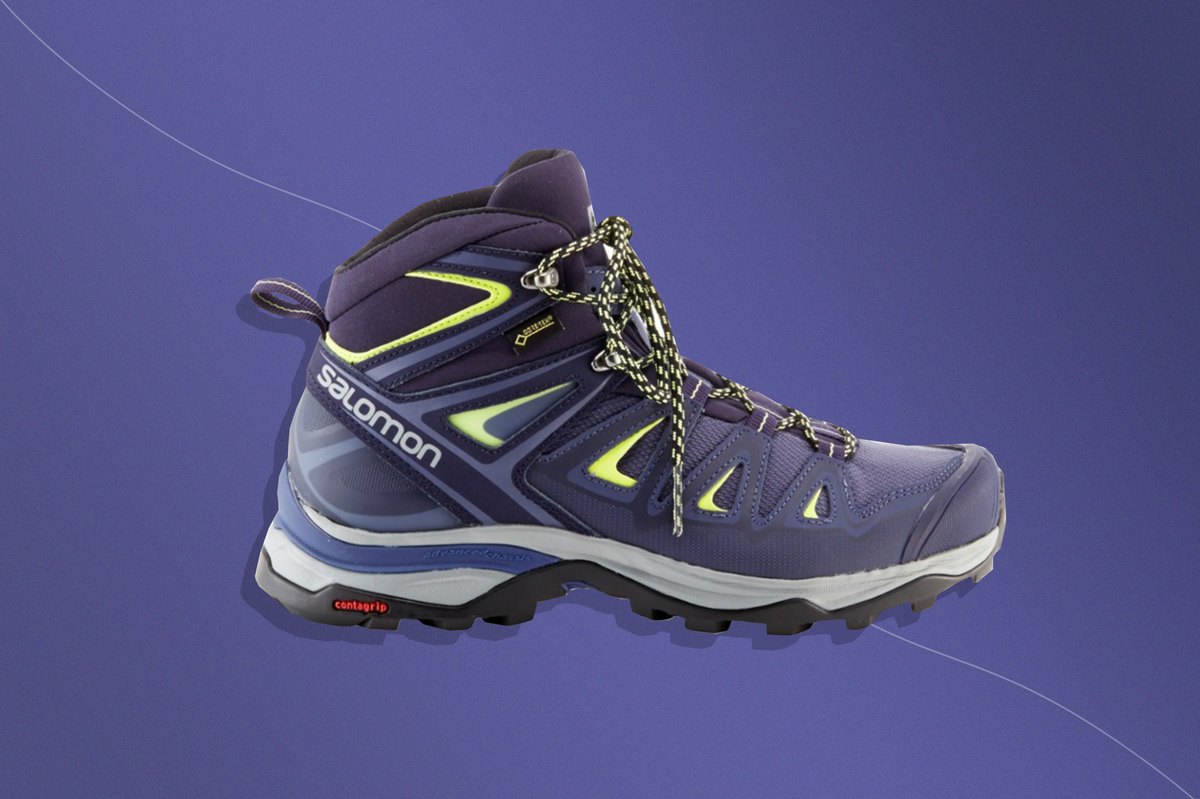
Featuring a contoured insole and heel cup, OrthoLite sock liners and an overall stabilizing shape and design, Salomon's X Ultra 3 Mid GTX hiking boots are as durable as they are wearable. They support, cushion and elevate the heel of the foot in order to ensure comfort throughout long hikes, which should help alleviate the pain caused by plantar fasciitis.
Advertisements
The mid-rise profile on these boots provides added support without confining the ankle or causing discomfort. Generally speaking, this is an important feature to look for in any hiking shoe, as it will help to keep your feet steady as you navigate rocky terrain, Dr. Cohen says.
Buy it: Amazon.com (men’s sizes 7-14); Amazon.com (women’s sizes 5-11); Price: $160 – $223
6. Best Sandals: OOFOS OOahh Slide Sandal
Visit Page https://go.skimresources.com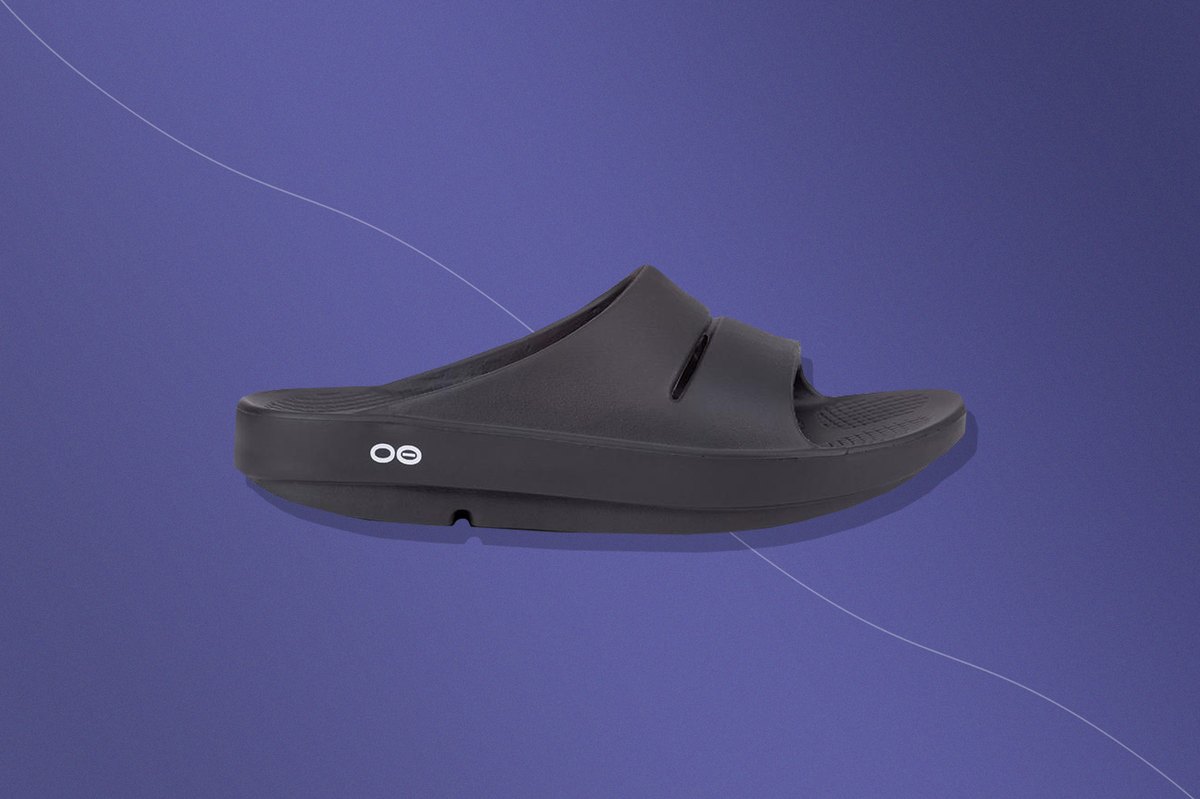
Advertisements
For the record, sandals are not the best choice when it comes to plantar fasciitis-friendly shoes because most are thin or lack structure, Dr. Cohen says.
That said, if you want an open-toed style for the summer months, a recovery sandal, like the OOahh Slide from OOFOS, is your best option.
Unlike most sandals, these slides are designed to absorb impact, reduce stress on joints and support the arches of your feet. This is thanks in large part to the foam material they're made of, which not only provides firm comfort but also helps prevent foot odor.
Buy it: Oofos.com (men’s sizes 4-13); Oofos.com (women’s sizes 5-16); Price: $59.95
What to Look for in Shoes for Plantar Fasciitis
1. Comfort
At the risk of stating the obvious, your shoes need to be comfortable if you're hoping to combat pain from plantar fasciitis. Look for shoes that have thick inner and outer soles, or ones that feature foam in their designs. Even then, however, you may still need to try on a few pairs before you find one that suits your particular preferences when it comes to a comfortable shoe.
2. Support
Although cushion may be the first thing that comes to mind, Dr. Cohen says it's also important to prioritize support when shopping for shoes to help with plantar fasciitis. An insole that your foot simply sinks into over time will not relieve your pain.
Rather, you should look for one that's comfortable and capable of reducing the impact on your heels. More often than not, this means choosing a running shoe. "This type of shoe offers the best support, flexibility and shock absorption," he explains.
3. Lifted Heels
The American Academy of Orthopaedic Surgeons recommends choosing a pair of shoes that not only features cushioned heel cups but actually elevates the heel. This slight lift will provide even more support to the part of your foot that needs the most relief.
If you find a shoe that checks all the boxes except for this one, you can add a heel-only insert (like this one from Dr. Scholl's) and get a similar effect.
Related Reading
The Best Shoe Inserts to Try, According to Podiatrists
4. Durable
According to the APMA, wearing shoes that are worn out in the heel and sole can actually cause plantar fasciitis to flare up.
So, you may want to consider the potential lifespan of a new pair of shoes before you commit to them. Choosing a more durable shoe now could help you avoid heel pain later on.
What to Avoid in Shoes for Plantar Fasciitis
1. Flat Insoles
Again, support is key, Dr. Cohen says. Some people may prefer a zero-drop heel to a lifted one, but if your shoes completely lack any structure in the heel and arch, that goes beyond a matter of personal preference. Simply put, they aren't going to reduce the pain from your plantar fasciitis. In fact, they may very well increase the stress placed on your feet and make your symptoms worse.
2. Thin Soles
Most boat shoes, sandals, flats, and dress shoes will do more harm than good if you have plantar fasciitis, per the APMA. Not only do these types of shoes tend to have flat insoles as described above, they also usually have thinner, harder soles that offer little in the way of support or shock absorption, let alone long-term comfort.
If you must wear these kinds of shoes, try not to wear them for extended periods of time or while exercising.
When to See a Doctor
Although a supportive, cushioned pair of shoes will help reduce the discomfort that comes with plantar fasciitis, it won't necessarily solve the issue entirely.
If your pain persists after a few weeks, gets worse or affects you even when you aren't standing or walking, make an appointment with a podiatrist. They may recommend physical therapy, custom orthotics or steroid injections in addition to wearing comfy shoes, Dr. Cohen says.

